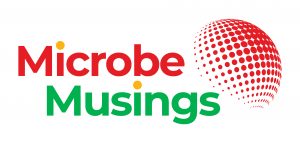The human gut microbiome comprises a community of microbes that changes over time and impact health in many ways. But where do these microbes come from? The prevailing hypothesis is that the mother plays an important role. Whether the transfer occurs in the uterus, continuously during and after birth, or both remains under debate. Nevertheless, the mother imparting her microbes to her infant child has raised the possibility of developing probiotics to facilitate a baby’s development.
In the final post of my series before I leave for the microbiome and probiotic conference in Miami, I had the great pleasure of speaking with Dr. Anders Damholt, Head of Clinical Development at Chr. Hansen. His role at Chr. Hansen places him at the center of probiotic development within the industry. His expertise in gut health and disease and the transfer of microbes from mother to infant also makes him the perfect person to speak to further about inter-generational human health.
Q: What are some ways we can detect instances of microbial transfer between mother and infant?
A: Detecting instances of endogenous microbial transfer between a mother and her infant child remains a challenge. The difficulties in identifying strain variation in sequencing data mean that we are just scratching the surface of the genetic diversity of microbial species in the human microbiome. That said, a well-designed study is necessary to detect microbial transfer events. With a known probiotic strain, designing qPCR primers specific to the strain and sampling as many types of clinical specimens as possible is paramount for any probiotic study. Researchers must also account for sample contamination to ensure the presence of any probiotic strain not attributed to technical errors.
Q: Where do you see prebiotics and probiotics playing a role in infant development?
A: Human breast milk is the best place where I can demonstrate the importance of prebiotics and prebiotics to a newborn’s development. Rigorous scientific research on infant health has shed light on its importance for a baby’s health. Mother’s milk contains human milk oligosaccharides (HMOs), sugar molecules that human beings cannot break down. These molecules can only be degraded by the human microbiome, releasing short-chain fatty acids (SCFAs) and cyclic amino acids as by-products.
The by-products produced from HMO degradation provide a wide range of health benefits. SCFAs can be transported into the bloodstream or be used by gut cells known as enterocytes for instance. In turn, SCFAs regulate metabolism and inflammation which provides protective effects against disease. HMO degradation also yields cyclic amino acids that also benefit human health. These amino acids, such as tryptophan, can be converted to cyclic lactic acids that can be recognized by receptors within the gut to facilitate its maturation. HMO consumption also reduces the frequency of crying and improves gut motility for the infant. It’s benefits like these that make breastfeeding the preferred method of milk feeding for babies.
Now, what’s also interesting is that there is only one known genus equipped for HMO degradation: Bifidobacterium. Some babies don’t have this microbe in their guts to begin with, which reduces their ability to benefit from breastfeeding. Introducing Bifidobacterium species capable of degrading HMOs into these babies would help them reap the benefits of feeding on breastmilk. Thus, the scientific literature shows that both probiotics and prebiotics can play essential roles in human development from birth.
Q: What is the most important takeaway point you want your audience to have when they listen to your talk?
A: The gut microbiome has a demonstrable impact on various aspects of one’s health status throughout their life. For any human being, this occurs as early as birth and proceeds as they grow. Even at the earliest stages of life, the infant’s immune system develops in concert with the microbiomes that are transferred between the mother and the infant.
In the scientific community, the prevailing dogma regarding the infant microbiome is that they derive from the mother. But how that transfer takes place requires clarification. Furthermore, how effective a probiotic formulation for the mother would be in transferring those microbes would help to refine these regimens to maximize mother and infant health.
To that end, my talk focuses on a series of two open-labeled, single-arm trials where we introduced a panel of probiotic strains to either the mother or the infant. Introducing it to the mother helped us investigate how the strains were transferred to the child and whether some strains were transferred more efficiently than others. Introducing the probiotic strains to the infants also helped us compare the efficacy of gut colonization by the strains between the mother and her baby.
Through the data I will present at my talk, I hope my audience will take to heart the importance of effective study design to identify instances of probiotic colonization and transfer between the mother and the infant. I also want my audience to see other possibilities for future study regarding strain selection and the role that the baby can play in transferring their microbes to the mother. Finally, I want my audience to appreciate the importance of a healthy human microbiome in our bodily health.
Q: What are you looking forward to the most in your attendance at this year’s conference?
A: The upcoming microbiome and probiotics conference affords a great place for me to get a feel of what’s going on in the field, particularly with talks about infant health. I want to see what the status in the microbiome field is and have a chat about the data I gathered. I am also eager to receive criticisms and new perspectives on my data so we can produce robust, reproducible findings and learn more about the human microbiome and probiotic development.
